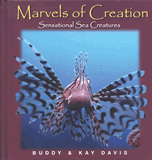Underwater Christmas
This miniature underwater Christmas tree shows how wonderfully God blends the beautiful with the practical.
You’ll find these festive decorations year-round on coral reefs all over the world. They’re actually the feeding and breathing organs of Spirobranchus giganteus, the Christmas tree worm. It’s all there in the name—Spirobranchus, or “spiral gill” (although at 1 ½ inches [3 cm], giganteus seems a bit of a stretch).
Christmas tree worms begin life by anchoring themselves on coral and building sand-tube homes as the coral grows around them. They unfurl their colorful, multipurpose gills into the ocean currents to extract oxygen and to filter plankton for food. The gills have tiny hairlike cilia that channel the food into the worm’s mouth. (They also collect sand, which is carried to storage sacs for tube improvement projects.)
But look quick. The slightest disturbance transforms this holiday landscape into a barren desert. In the blink of an eye, a forest of worms can retract their gills and disappear into their burrows to avoid predators. But if you’re patient, they’ll slowly reappear within a minute, revealing once again the beauty and artistry that our Creator put into even a practical necessity like gills.
Answers Magazine
October–December 2016
Your irresistible urge to snatch up that cute little puppy and hug it for all youʼre worth isnʼt just a feeling. Itʼs science.
Browse IssueRecommended Resources

Answers in Genesis is an apologetics ministry, dedicated to helping Christians defend their faith and proclaim the good news of Jesus Christ.
- Customer Service 800.778.3390
- Available Monday–Friday | 9 AM–5 PM ET
- © 2025 Answers in Genesis





